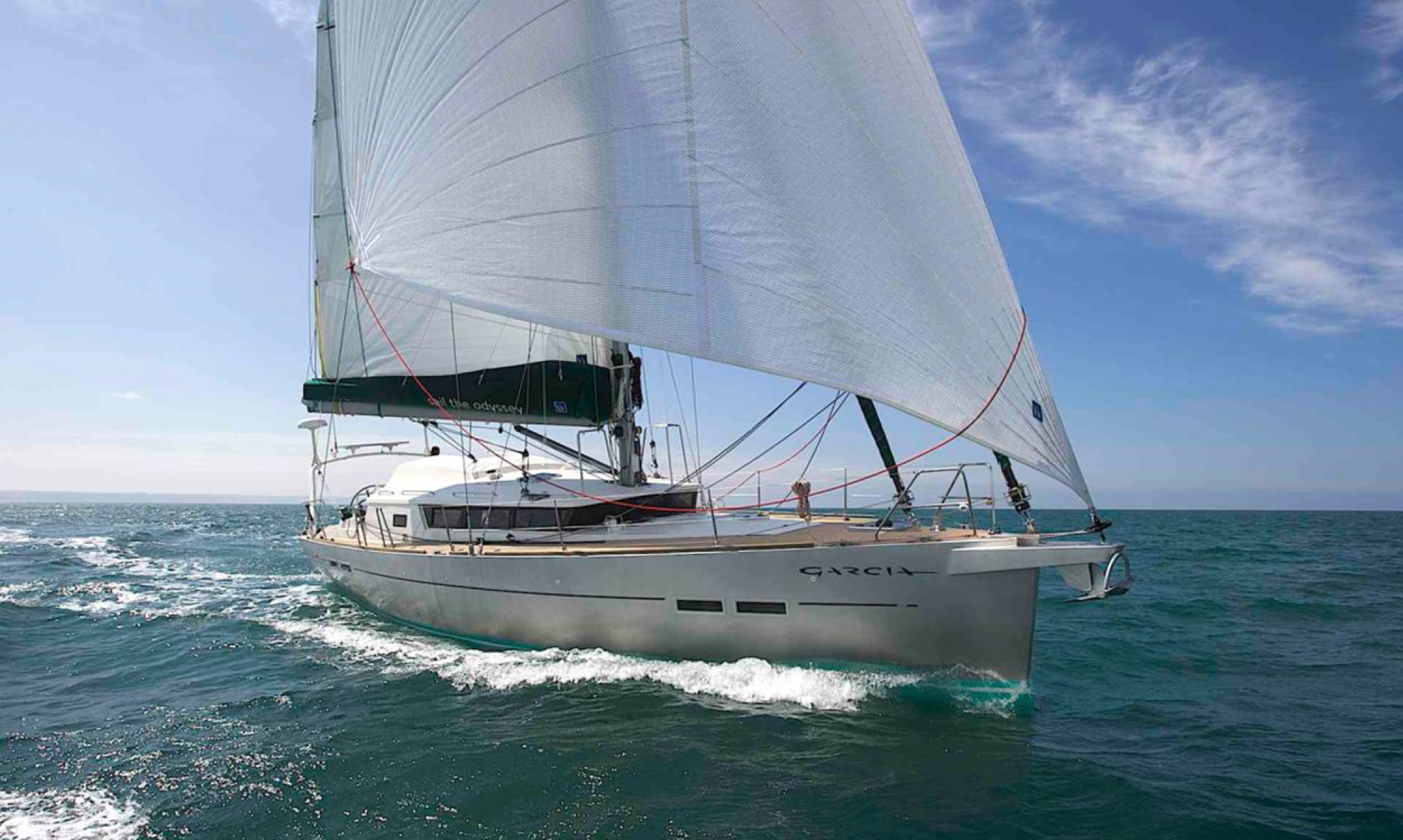‘On the 30th August 1906, the 21 metre sloop Gjoa, commanded by Norwegian, Roald Amundsen passed Point Barrow, Alaska and the North-West Passage was finally conquered after centuries of endeavour.’
Exactly one century later in 2006, we flew across Canada, Nunavut and the Arctic Circle, landed on a gravel runway, boarded the Akakemik Ioffe and followed in wake of Gjoa, passed through Peel Sound, Dolphin and Union Strait, Cambridge Bay, Holman (Ulukhaktuk) to the Amundsen Gulf where our transit through the North-West Passage was complete.
Records indicate that only 172 voyages have passed through the North-West Passage, and a mere 27 conveyed passengers.
Returning from where we had come, we were the 15th vessel to transit the passage in both directions since the St Roch in 1940-44 and only 3 with the same compliment of crew and passengers.
This was the first Australian lead expedition to have made it through and returned. We have been told all passenger’s names were placed in the museum at St Petersburg in Russia by our Russian Captain Gennadiy Poskonny, Master of RV Akakemik Ioffe.
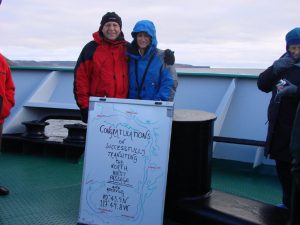
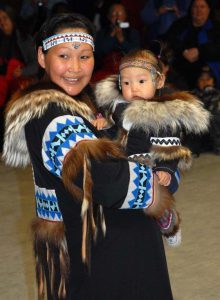
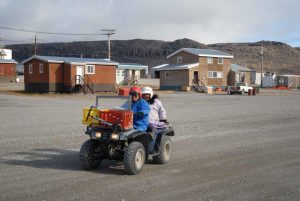
Inuit town of Cambridge Bay
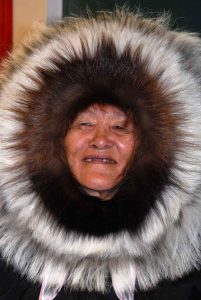
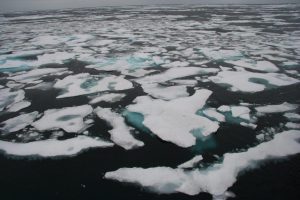
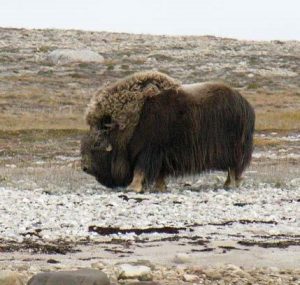
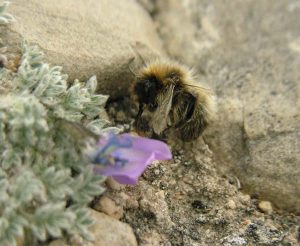
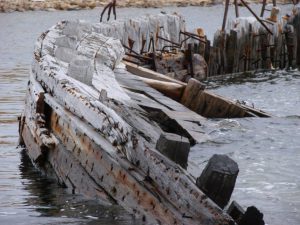
The Maud, named for Queen Maud of Norway was launched in June 1916 and christened by Roald Amundsen by crushing a chunk of ice against her bow: ‘It’s not my intention to dishonour the gracious grape, but already now you shall get the taste of your real environment. For the ice you have been built and in the ice you shall stay most of your life, and in the ice you shall solve your tasks.
With the permission of our Queen, I christen you: Maud.’
.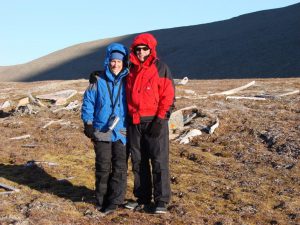
Ruins from the Thule period. Ancestors of the Inuit lived here between 700 – 1,000 years ago. Their igloos where made from whale bones and skins. Flat stones in the tundra showed the children played hop scotch. The Dorset, through to the Thule and Inuit were all nomadic, living in the next igloo they found. If inukshuks, flat stones packed on each other, where seen in front of an igloo, it meant it was occupied. These early people moved from the Bering Straits across the Arctic west to the east.
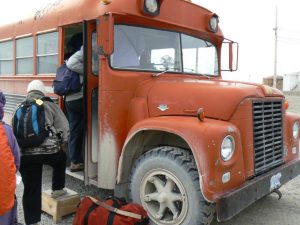
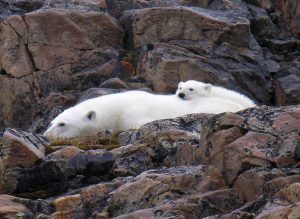
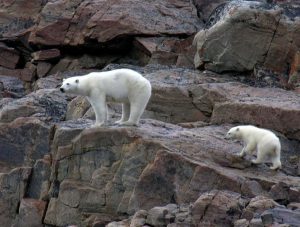
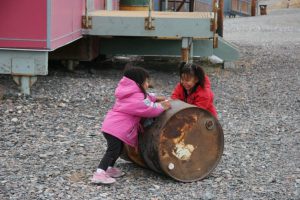
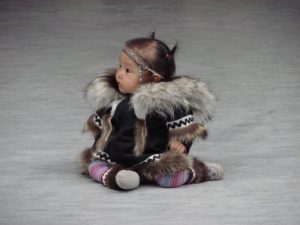
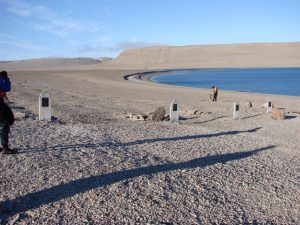
Graves of the lost Franklin Expedition. 1846. John Torrington John Hartnell William Braine
All men where lost. Tinned food had just been discovered. Tins found and analysed today found the lead used as a solder and poisoned the food and could have been the cause of their deaths. Their bodies are perfectly preserved in the permafrost.
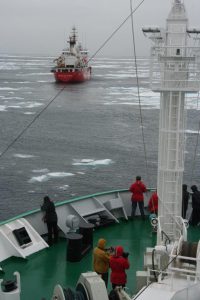
Canadian Coast Guard guiding us through the ice.
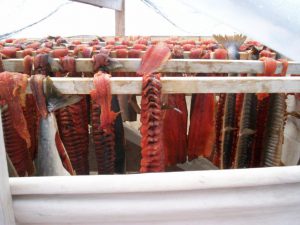
Arctic Char drying in the sun
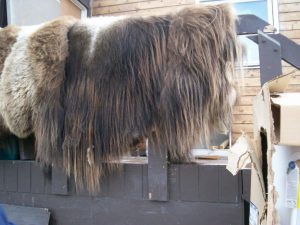
Muskox skins dried and tanned for boots and coats.
